Hatshepsut: Egypt's Greatest Pharaoh
Hatshepsut was a female pharaoh who loved her country, her gods, and her trees.
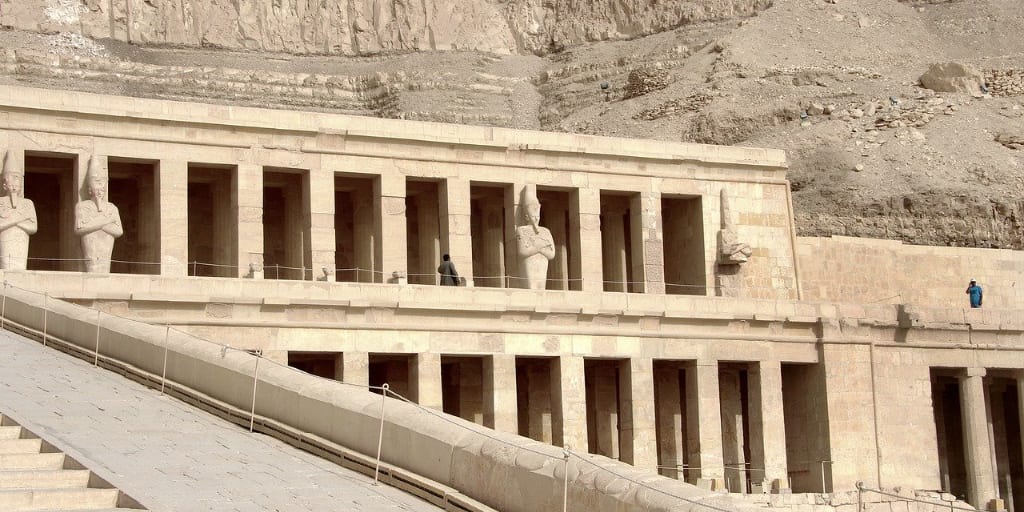
In Libya, a man named Herodotus recorded the tales of tribes dotting the desert. Among the Bedouin campfires drinking spicy mint tea, he learned their stories and customs. After desert winds blew into every fold of his garments and his inkpot grew thick with sand, he ventured into the land of the ancient river. This river was a wide ribbon of water, cutting through the desert. The language was like a distant song he dreamed but could not speak. Herodotus was easily distracted. A long journey, the desert, and determination can do that to a man.
He did not know that he walked right by the stone carvings that bore her likeness half covered in sand. Her great temple was too far away, hidden deep in the desert. The chisel marks that gouged out her royal name and images were too high for him to see. Palace workers had removed her name from the king’s lists many dynasties ago. Herodotus paid an old interpreter a high price to hear those names. It was important to know all of them, he thought.
The interpreter recited from memory, pointing a gnarled finger at the wall of cartouches, emphasizing every title with guttural pronunciation. Her titles were a thousand years away from mortal ears that day. Then, a slight breeze swirled the gritty sand, and on it, a name only the gods could hear: Hatshepsut.
*
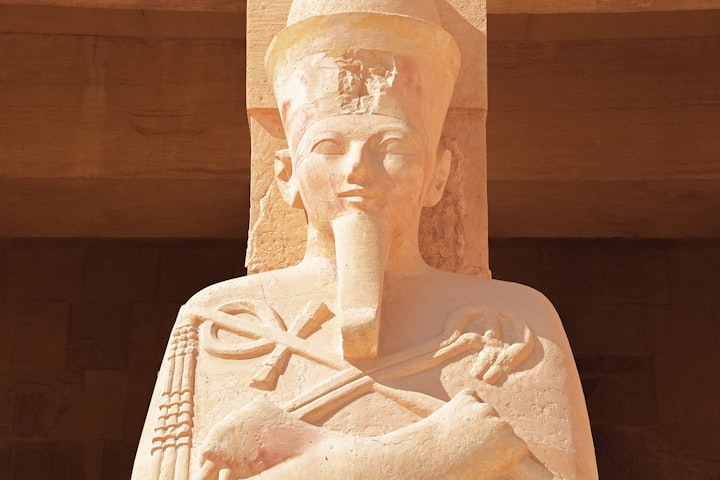
Hatshepsut was born into the luxurious, booming economy of the 18th dynasty of ancient Egypt. The same dynasty that gave us king Tutankhamen and his treasures. Her father, pharaoh Thutmose I, was a military man who led many successful campaigns into the land of Nubia. He was a lover, a fighter, and a builder. It was through Hatshepsut’s mother, Ahmose, that the royal blood flowed. Ahmose had other children that died in infancy from unknown ailments or accidents. Child mortality was high along the ancient Nile. Infants and young children were susceptible to disease and viruses—not to mention natural threats such as animal attacks, snake bites, or scorpion stings. Thus, at 12 years old, Hatshepsut was the only fully royal child next in the line of succession.
Shortly after her 12th birthday, her father, Thutmose I, died. To keep the bloodline pure, Hatshepsut had to marry a blood relative. With no full-blooded brothers, the priests turned to the harems and a lesser wife, Mutnufret, whose son, Thutmose II, was the half-brother of Hatshepsut. Poor Thutmose II suffered from a skin disease similar to smallpox. He was in poor health, and it is still unknown whether he had a long or a very short reign. We know that his kingship produced two heirs—Neferure, the daughter of great royal wife, Hatshepsut, and the famous Thutmose III by a lesser wife, Iset. After Thutmose II's death, Hatshepsut became co-regent with her step-son Thutmose III, who was only an infant.

As Thutmose III rocked in his cradle, Hatshepsut declared herself pharaoh, portraying herself wearing the Nemes headdress and beard. Her images and statues had masculine features such as broad shoulders and muscles. In ancient Egypt, propaganda was the real king, so her position as queen just wasn't enough. She had to be pharaoh too. It was essential to show her people that she could uphold Ma'at (truth, justice, and balance). However, she did not abandon her feminine side. Representing both genders, Hatshepsut depicted herself as male but wrote her titles as female. She was the ultimate politician and knew precisely how to market herself to her people and the gods.
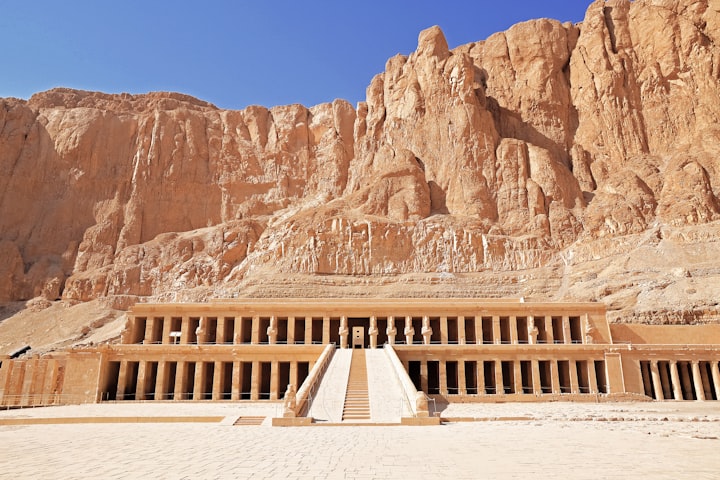
Hatshepsut wasn't messing around when it came to building projects. She built more than any other pharaoh before her. Her first undertaking was two massive obelisks at the temple of Karnak. She did, however, have help. Senmut was her most trusted advisor and architect. He was a commoner who rose in the ranks sometime during the reign of Thutmose I. It is unclear how the two met, but it's a good thing they did. Senmut would mastermind Hathsepsut's crowning achievement--Dier el Bahri, a massive, colonnaded mortuary temple set against the towering limestone cliffs in the Valley of the Kings.
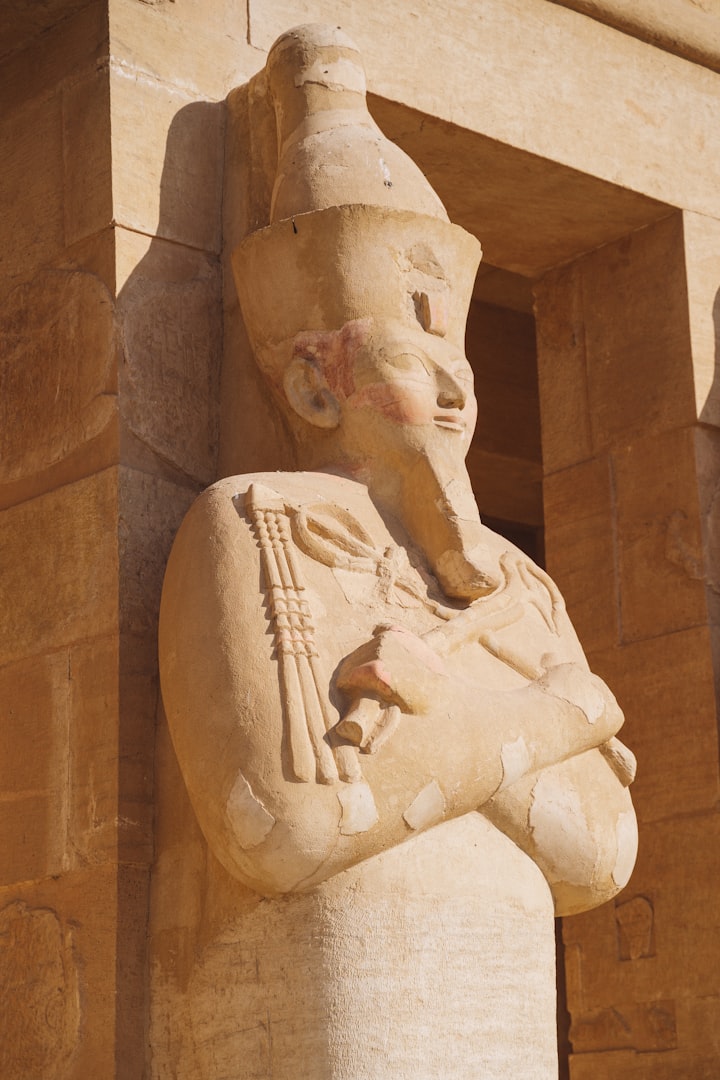
Her brilliance as a politician then paved the way for her story of divine birth. Who could argue when the gods created someone this unique? It was kismet (destiny/fate), she argued. Hatshepsut was so determined to share her birth story that her mortuary temple walls portray the scenes for all eternity. There were numerous statues of her as the god Osiris standing guard outside her temple (see photo above), solidifying her legitimate connection and destiny to rule the land as pharaoh. She had over 100 sphynxes created in her likeness that lined Deir el Bahri's walkway leading to Karnak. She wanted everyone to see her connection and devotion to the gods.

There is evidence that Hatshepsut led a small battle campaign in full pharaoh regalia, just like her father did, into Nubia. However, she is most famous for the expedition to the land of Punt (modern-day Ethiopia/Somalia). It took months to reach Punt and bring back riches of exotic animals, frankincense, and myrrh. Myrrh is a resin that grows on low trees. It has a spicy, sharp, and earthy fragrance, and it was Hatshepsut's favorite scent. In scenes painted on Hatshepsut's temple walls, the queen of Punt is portrayed with large fat rolls and servants carry heaping platters of spices and gold offerings. To Hatshepsut, these treasures were nothing compared to the frankincense and myrrh trees. Egyptologists have even found the root of a frankincense tree at Dier el Bahri that once lined the mortuary temple. Thus, Hatshepsut became the world's first arborist because she successfully transplanted foreign trees to Egyptian soil. Replanting trees from sub-Saharan Africa was no easy task, given the arid Egyptian climate. Paintings on her temple walls illustrate how her gardeners achieved the difficult job of keeping the root balls intact in baskets. One can imagine the fragrance of burning incense wafting into the temple's inner sanctum during the heat of the day in ancient times.
Senmut built himself a burial site right next door to Hatshepsut's Deir el Bahri. Within his burial chamber is the world's first astronomical ceiling. He inscribed vital passages from the book of the dead on the walls to ensure his safe passage to the underworld. He even tucked away his image behind a door in Hatshepsut’s mortuary temple in the Hathor chapel. Senmut commissioned over 25 sculptures. Most are of his connection to Hatshepsut’s daughter Neferure as her teacher. His small statues outnumber any commoner before him. Rumors that Hatshepsut and Senmut were lovers abound. There is even graffiti near Deir el Bahri showing what could be the pair engaged in a scandalous sexual position. Many scholars disagree about this relationship as Senmut was 20 years Hatshepsut’s senior when they met. He never married, simply not seeking romance or a family, which was odd by ancient Egyptian standards.
With her young nephew growing up safely within the palace walls, Hatshepsut ruled the country as pharaoh peacefully for 20 years. Early scholars liked to villainize Hatshepsut as an evil stepmother who snatched the throne away from the child. If Thutmose III hated her so much, why did he wait 20 years to erase her name from the king's lists and monuments? Perhaps his place on the throne was in question? Did he want to strengthen his connection with his royal father, Thutmose II, and grandfather, Thutmose I? An aunt claiming god-king status would put a damper on those royal bonds. Was he worried about his son's (Amenhotep) succession and wanted to solidify that royal connection?
At the same time, Hatshepsut might have encouraged her daughter Neferure to become pharaoh instead of great royal wife. There is a particularly obscure wall carving of Neferure, shown as regent king to Hatshepsut. Did Hatshepsut want her daughter to take the throne, and did this cause Thutmose III to destroy Hatshepsut’s legacy? It certainly would be motivation enough for a man who enjoyed the protection of the woman in his youth but refused to disrupt the divine order of Ma'at as an adult. Was this idea just too much for Thutmose III, who would later be known as the Napoleon of ancient Egypt?

Toward the end of her long life, the one thing Hatshepsut lacked was something many of us take for granted today--modern dentistry. The main staple in the ancient Egyptian diet was bread. Grain grinding on round slabs of sandstone caused fine bits of rock to mix with the flour. Over time this wore away the enamel on the Egyptian's teeth like fine sandpaper. Hatshepsut was no exception, and it may have been a single tooth that was her eventual downfall. If Egyptologist, Zahi Hawass, is correct in his 2007 discovery of the mummy of Hatshepsut, then a tooth abscess was probably at least partially to blame for her death. Hawass found a canopic box with Hatshepsut’s cartouche on the outside that contained a tooth. He matched the tooth with a mummy from an 18th dynasty royal cache found in the Valley of the Kings. If she had an abscess, Hatshepsut’s final days were not pleasant. She was probably more than ready to embark on her journey to the ancient Egyptian afterlife.
*
One thousand five hundred years before Cleopatra, Hatshepsut thrived along the banks of the Nile. However, unlike the more popular Cleopatra, Hatshepsut’s legacy would not reach modern consciousness until the 19th century. She remained hidden due to her radical propaganda move of depicting herself as a male pharaoh. Thutmose III tried to destroy the memory of her long, prosperous reign to legitimatize his right to the throne. Hatshepsut’s legacy prevails because she knew “image was everything,” and she put her likeness everywhere in every form available to her--even if it broke with convention. Only one woman ruled Egypt peacefully for over 20 years, built more monuments, was the first to transplant trees, pleased the gods, reassured her people, and ruled as great god’s wife and pharaoh. That woman was Maatkare Hatshepsut.
Resources:
- The Queen Who Would Be King
- Cleopatra
- Rehabilitating Cleopatra
- The Truth Behind Egypt’s Female Pharaohs and Their Power
- Who Was Hatshepsut?
- Lessons In Tree Care From Ancient Egypt
- Tooth Solves Hatshepsut Mummy Mystery
- Secrets of Egypt's Lost Queen on Discovery Channel
<<-------------------->>
If you enjoyed this article, you might also like 5 Inventions From Ancient Egypt That We Still Use Today and What Did The Egyptians Eat?.
<<-------------------->>
About the Creator
Nikole Lynn
Ancient Egypt, a hot cup of coffee or tea, my two cats, and a good book are my passions.


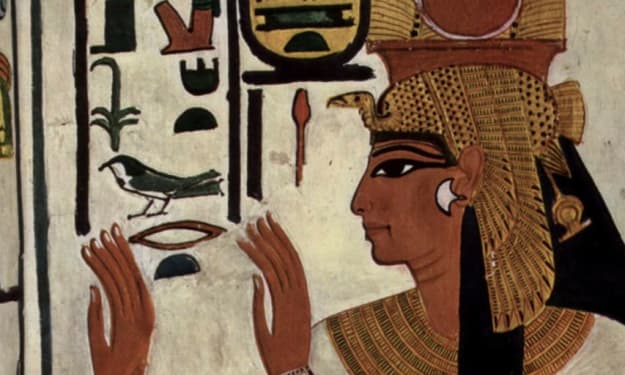



Comments
There are no comments for this story
Be the first to respond and start the conversation.